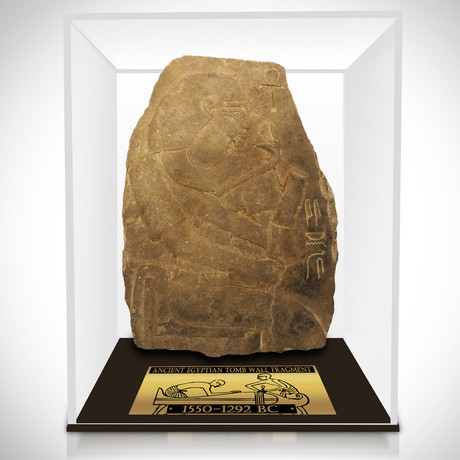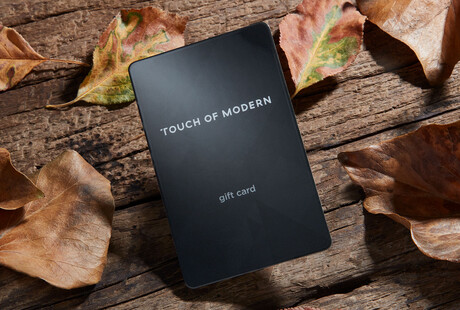Ancient Egyptian Authentic Tomb Wall Fragment With Ancient Graffiti // Museum Display
Product Description
This jaw-dropping collection from RARE-T features a staggering array of authentic antiques, artifacts, oddities, skulls, and cruelty-free taxidermy from various eras in history.
This custom museum display showcases an absolute masterpiece, an authentic Limestone Bas-Relief Tomb Wall fragment with ancient graffiti dating from 1550-1292 BC, part of the 18th Dynasty. This Bas-relief (sculpture that has less depth to the faces and figures than they actually have, when measured proportionately to scale, and allows the work to be viewed from many angles without distortion of the figures themselves), showcases a figure with a face beautifully defined with incised mouth, large almond shaped eye and faint ear, wearing a tripartite wig, broad collar necklace, and divine beard.
The figure is sitting on a throne and holding The Sekhem Scepter in the right hand (which was carried by gods, kings and high officials). Deriving from the verb "to be mighty" it was also the logogram for the word "power". Early dynastic kings were sometimes depicted with the Sekhem in their right hand and a censer or a mace in their left, while high officials usually carried the Sekhem on its own. This one however holds the lotus flower which is a symbol of beauty, purity, tranquility and rebirth. The Sekhem was closely connected with specific gods, most notably the goddess Sekhmet whose name ("the Powerful One") was written using the Sekhem.
Osiris and Anubis were both gods of the underworld who held the epithet "Great sekhem who dwells in the Thinite nome" and the Sekhem was part of the ritual observed in mortuary cults in the presentation of offerings to the ka of the deceased. The Kherep Sceptre ("that which directs") and the Aba Scepter ("that which commands") bear such a striking resemblance to the Sekhem that it can be difficult to distinguish them. However, they seem to have played different roles in the ceremonies, the Kherep being used by dignitaries and the Aba by commanders.
Making this artifact even more interesting is the fact that it has been engraved by GRAFFITO (ancient graffiti). The top right is the Ankn symbol for life, and the bottom right has been mysteriously encrypted as both the hieroglyphs for the 'pair of reeds', and the symbol for 'snake', placed over the symbol for 'folded cloth', have been reversed - making this illegible.
Graffiti has existed since cavemen began telling their stories through art drawn on the walls of caves. Unique of-a-kind, you'll receive the exact piece shown in the photos, protected under plexiglass in a custom display to keep it looking pristine, ensuring protection of your investment while allowing you to fully appreciate this piece of collectible ancient history. The customized descriptive metallic plaque, in addition to the detailed finishing, add to the elegant, gallery quality look. Complete with a certificate of authenticity, this crown jewel of any collection is an investment that will only get better with age.
Product Details
- Measurements
5.75"L x 7.375"W x 3"H
- OriginEgypt
Shipping Information
-
Shipping AvailabilityCanada, United States
-
Shipping PolicyDiscounted Shipping
-
Discounted Shipping$99.00 first item / $99.00 each additional
-
Ship In7-9 weeks ⓘ
-
Return PolicyFinal sale, not eligible for return or cancellation




























































 .
.